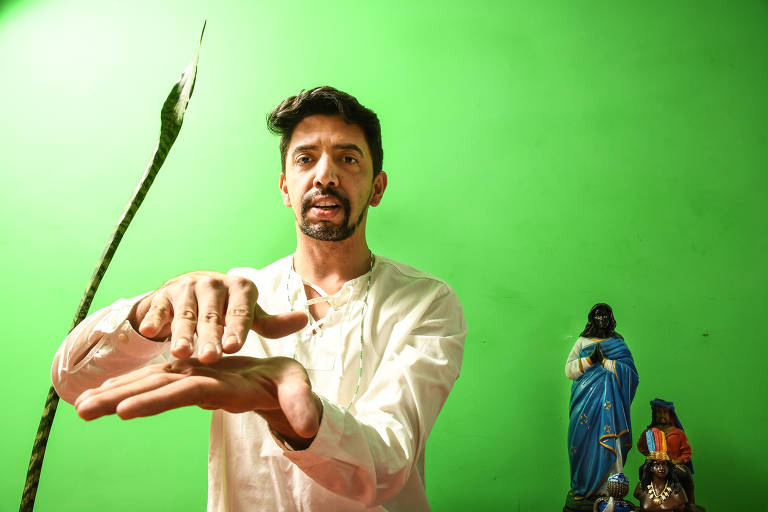Is a pombagira the devil? Can she turn someone gay? Was she a prostitute?
Misrepresentations about the Afro-Brazilian religious entity, generally represented as a woman with black hair and a seductive aura, lead Marcelo Guti, 37, to want to get his hands on it.
Nothing belligerent, in this case. It was with her that the interpreter of Libras (Brazilian Sign Language) managed to translate to a deaf boy that the pombagira is not something of the devil just because she wears red and black, colors he learned to associate with the devil.
Or that no entity "homosexualizes" a person, and that the feminine spirit embodied by mediums, according to beliefs such as Umbanda and Candomblé, may have been a harlot in past lives, but also may have been a cook, a nurse, a farmer.
Co-founder of the Instituto Mãos que Cantam, Libras School in Guarulhos (SP), Guti is a reference in a little explored field: interpreting in signs the typical language of religions such as Umbanda, populated by figures such as preto-velho (elders), erê (children), sailors and caboclo (healers).
He learned sign language at the church, which offered him a free course to help with the deaf audience who couldn't keep up with the preaching.
"It all started in churches," he says. "Some monks have a vow of silence and use signs. They thought at the time that the deaf had no reasoning, no soul, then came the educational sphere."
Translated by Kiratiana Freelon
